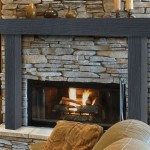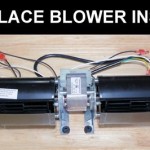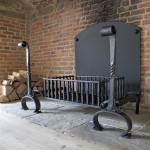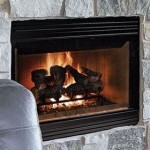Free Standing Vent Gas Fireplaces: A Comprehensive Overview
Free standing vent gas fireplaces offer a blend of aesthetic appeal and functional heating, providing a versatile solution for residential and commercial spaces. These fireplaces, unlike their built-in counterparts, are designed as standalone units, offering placement flexibility and relatively straightforward installation. Understanding their characteristics, benefits, and limitations is crucial for making informed decisions regarding home heating and ambiance.
A free standing vent gas fireplace operates by burning natural gas or propane to generate heat. The combustion process necessitates a venting system to expel exhaust gases safely outside the building. This venting can take various forms, influencing the fireplace's installation requirements and overall efficiency. The design of a free standing unit allows for installation in rooms without existing fireplaces or chimneys, expanding the possibilities for incorporating a fireplace into a home’s design.
The variety of styles available ensures compatibility with diverse architectural preferences. From traditional designs mimicking wood-burning stoves to contemporary models featuring clean lines and minimalist aesthetics, free standing vent gas fireplaces can complement a range of interior design schemes. This adaptability makes them an attractive option for homeowners seeking both functionality and visual appeal.
Key Advantages of Free Standing Vent Gas Fireplaces
Several key benefits contribute to the popularity of free standing vent gas fireplaces among homeowners. These advantages range from installation flexibility to operational convenience and aesthetic versatility.
Installation Flexibility: One of the primary advantages of a free standing vent gas fireplace is its installation flexibility. Unlike traditional wood-burning fireplaces or built-in gas fireplaces, free standing models do not require an existing chimney or extensive structural modifications. This simplifies the installation process and reduces associated costs. The unit can be placed against a wall or in a corner, provided the necessary venting requirements are met. Different venting options, such as direct vent or B-vent systems, offer further adaptability depending on the building's architecture and local regulations. The reduced installation complexity and cost make free standing units a more accessible option for many homeowners.
Operational Convenience: Free standing vent gas fireplaces offer significant operational convenience compared to wood-burning fireplaces. They eliminate the need for sourcing, storing, and handling firewood. Starting and stopping the fire is as simple as pressing a button or using a remote control. Many models feature adjustable flame heights and heat output, allowing for precise temperature control. Furthermore, gas fireplaces produce significantly less ash and soot than wood-burning fireplaces, reducing the time and effort required for cleaning and maintenance. This operational convenience makes gas fireplaces an attractive option for individuals seeking a low-maintenance heating solution.
Aesthetic Versatility: The aesthetic versatility of free standing vent gas fireplaces allows them to seamlessly integrate into various interior design styles. Manufacturers offer a wide range of designs, from traditional models resembling classic wood-burning stoves to contemporary units featuring sleek lines and modern materials. Finishes are available in various colors and textures, allowing homeowners to customize the fireplace to match their existing décor. Some models feature realistic log sets and ember beds, replicating the visual appeal of a wood-burning fire. Others incorporate decorative glass or stone accents, adding a touch of contemporary elegance. This aesthetic versatility ensures that a free standing vent gas fireplace can be a stylish and functional addition to any home.
Types of Venting Systems for Free Standing Gas Fireplaces
The venting system is a critical component of a free standing vent gas fireplace, responsible for safely expelling combustion byproducts from the home. Different venting systems offer varying levels of efficiency, installation complexity, and cost. Understanding the different options is crucial for selecting the appropriate system for a specific fireplace and home.
Direct Vent Systems: Direct vent systems utilize a sealed combustion chamber and draw air from outside the home for combustion. Exhaust gases are vented directly outside through a dual-pipe system, with one pipe drawing in fresh air and the other expelling exhaust. This sealed system prevents indoor air from being used for combustion, improving energy efficiency and reducing the risk of backdrafting. Direct vent systems are generally considered the safest and most efficient option, making them a popular choice for modern gas fireplaces. They can be vented horizontally through a wall or vertically through the roof, providing installation flexibility. However, direct vent systems are typically more expensive to install than other venting options.
B-Vent Systems: B-vent systems, also known as natural vent systems, rely on natural convection to exhaust combustion gases. These systems require a vertical vent that extends through the roof, allowing hot gases to rise and exit the building. B-vent systems use air from inside the room for combustion, which can potentially reduce energy efficiency and increase the risk of backdrafting if not properly installed and maintained. These systems are generally less expensive to install than direct vent systems but may require more stringent safety precautions. They are typically used in homes with existing chimneys or vertical vent shafts. Regular inspections and maintenance are essential to ensure the safe and efficient operation of B-vent systems.
Vent-Free Systems (Not Applicable to "Vent Gas Fireplaces"): It is important to note that vent-free gas fireplaces, while technically "free standing" in some cases, do not require any venting. They burn gas so efficiently that the exhaust gases are considered negligible. However, most building codes prohibit or restrict the use of vent-free gas fireplaces in certain areas due to concerns about indoor air quality and potential carbon monoxide buildup. These are not considered "vent gas fireplaces" as discussed in the prompt. Because the prompt explicitly requires "vent gas fireplaces", this option is not relevant
Factors to Consider When Choosing a Free Standing Vent Gas Fireplace
Selecting the right free standing vent gas fireplace involves careful consideration of various factors, including heating capacity, venting requirements, fuel type, aesthetic preferences, and budget. Evaluating these factors ensures that the chosen fireplace meets the homeowner's specific needs and preferences.
Heating Capacity: The heating capacity of a free standing vent gas fireplace is measured in British Thermal Units (BTUs). The appropriate BTU rating depends on the size of the room or area to be heated. A larger room requires a fireplace with a higher BTU rating. Consider the climate and insulation of the home when determining the necessary heating capacity. Overly powerful fireplaces can overheat the space, while underpowered fireplaces may not provide sufficient heat. Consulting with a qualified HVAC professional can help determine the optimal BTU rating for a specific application.
Venting Requirements and Installation Costs: As discussed earlier, the venting system is a critical aspect of a free standing vent gas fireplace. The choice of venting system impacts installation complexity, cost, and energy efficiency. Direct vent systems are generally more expensive to install but offer superior safety and efficiency. B-vent systems are less expensive but require careful installation and maintenance. Obtain estimates from multiple qualified installers to compare costs and ensure proper installation. Consider any modifications to the home's structure that may be required for venting, such as cutting holes in walls or roofs. Compliance with local building codes and regulations is essential to ensure safe and legal installation.
Fuel Type (Natural Gas vs. Propane): Free standing vent gas fireplaces can operate on either natural gas or propane. Natural gas is typically more affordable than propane, especially if the home is already connected to a natural gas line. Propane, however, offers greater flexibility in terms of location, as it does not require access to a natural gas network. A propane tank can be installed virtually anywhere on the property. Consider the availability and cost of each fuel type in the area when making a decision. If choosing propane, ensure that the tank is properly sized and installed according to local regulations. The conversion between natural gas and propane requires professional adjustments to the fireplace's gas valve and burner.
Aesthetic Design and Features: The aesthetic design of a free standing vent gas fireplace is a crucial consideration for homeowners seeking to enhance their home's décor. Evaluate the various styles, finishes, and features offered by different manufacturers. Consider the overall style of the room and choose a fireplace that complements the existing décor. Look for features such as realistic log sets, adjustable flame heights, and remote controls to enhance the ambiance and convenience of the fireplace. Some models offer decorative glass or stone accents, while others feature integrated blowers to circulate heat more effectively throughout the room.

Lennox Visions Elite Series Direct Vent Freestanding Stove

Kozy Birchwood 20 Gas Stove Fireplace S Hearth Home

Valor Freestanding Gas Fireplaces Patio Palace

Kozy Birchwood 20 Gas Stove Fireplace S Hearth Home

Direct Vent Gas Fireplaces Best Fire Hearth Patio

Lakefield Xl Direct Vent Freestanding Gas Fireplace Stove Kozy Heat

Direct Vent Gas Stoves In Dc

Gas Propane Free Standing Stoves

Free Standing Gas Fireplace Stoves For 30 On Now

Gas Direct Vent Stoves S Service Whole Main Street Fireplace Suffolk Long Island








